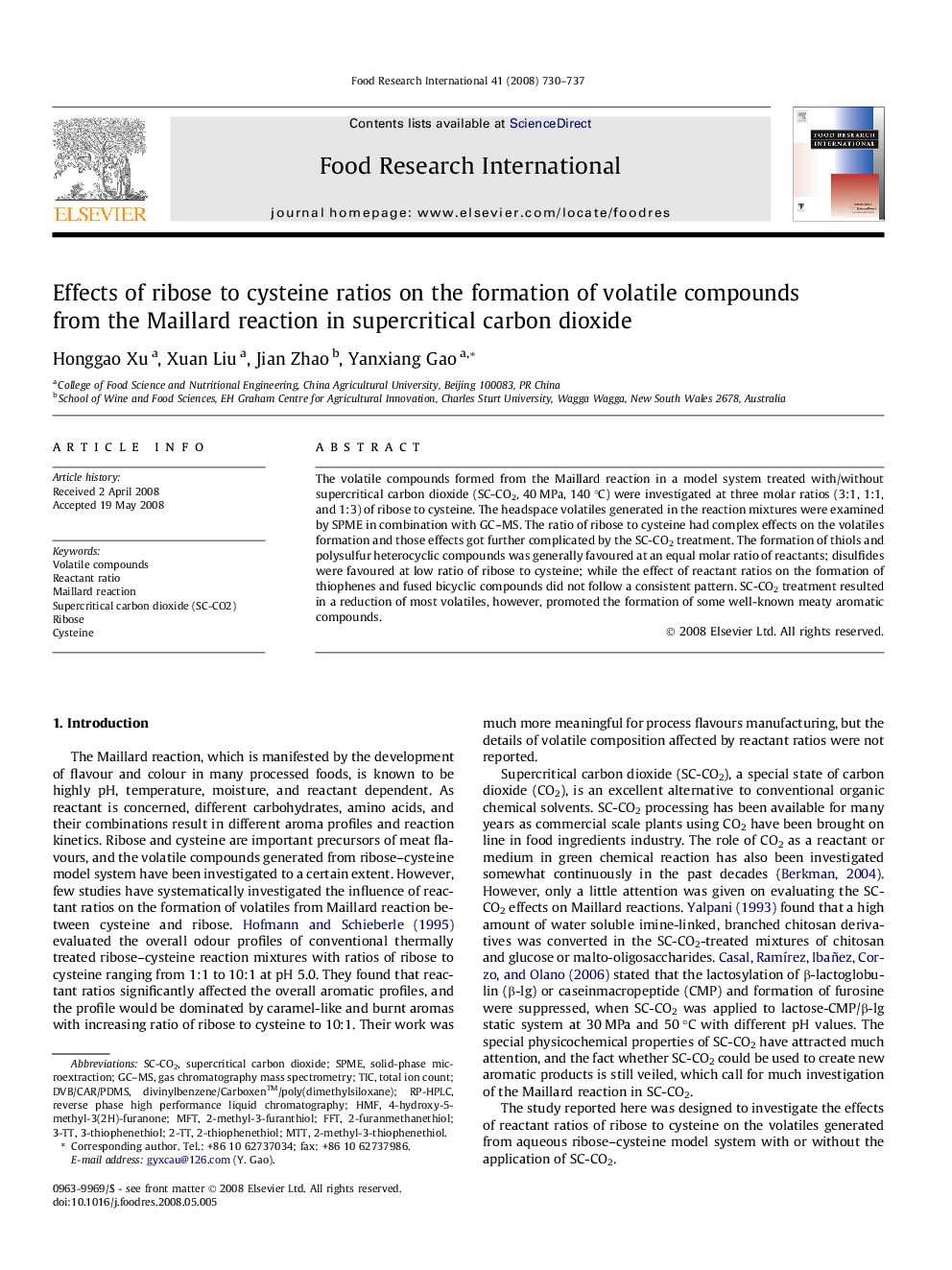| Article ID | Journal | Published Year | Pages | File Type |
|---|---|---|---|---|
| 4562183 | Food Research International | 2008 | 8 Pages |
Abstract
The volatile compounds formed from the Maillard reaction in a model system treated with/without supercritical carbon dioxide (SC-CO2, 40 MPa, 140 °C) were investigated at three molar ratios (3:1, 1:1, and 1:3) of ribose to cysteine. The headspace volatiles generated in the reaction mixtures were examined by SPME in combination with GC-MS. The ratio of ribose to cysteine had complex effects on the volatiles formation and those effects got further complicated by the SC-CO2 treatment. The formation of thiols and polysulfur heterocyclic compounds was generally favoured at an equal molar ratio of reactants; disulfides were favoured at low ratio of ribose to cysteine; while the effect of reactant ratios on the formation of thiophenes and fused bicyclic compounds did not follow a consistent pattern. SC-CO2 treatment resulted in a reduction of most volatiles, however, promoted the formation of some well-known meaty aromatic compounds.
Keywords
Related Topics
Life Sciences
Agricultural and Biological Sciences
Food Science
Authors
Honggao Xu, Xuan Liu, Jian Zhao, Yanxiang Gao,
